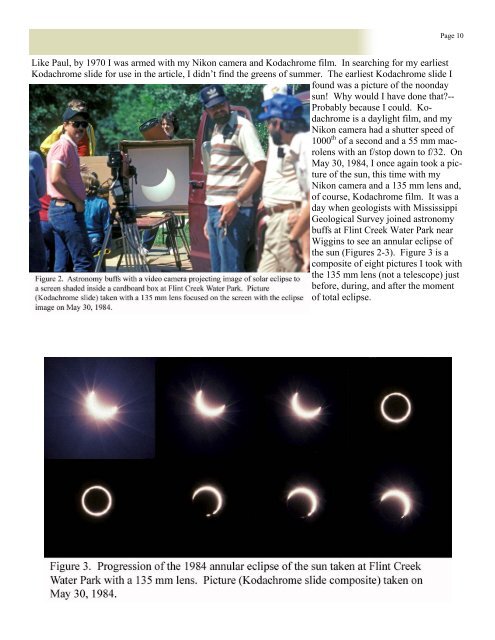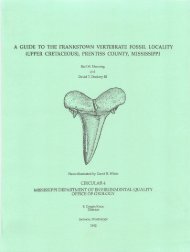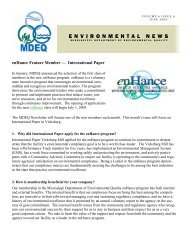Vol. 6 Issue 8ext.pub - Mississippi Department of Environmental ...
Vol. 6 Issue 8ext.pub - Mississippi Department of Environmental ...
Vol. 6 Issue 8ext.pub - Mississippi Department of Environmental ...
You also want an ePaper? Increase the reach of your titles
YUMPU automatically turns print PDFs into web optimized ePapers that Google loves.
Page 10<br />
Like Paul, by 1970 I was armed with my Nikon camera and Kodachrome film. In searching for my earliest<br />
Kodachrome slide for use in the article, I didn’t find the greens <strong>of</strong> summer. The earliest Kodachrome slide I<br />
found was a picture <strong>of</strong> the noonday<br />
sun! Why would I have done that?--<br />
Probably because I could. Kodachrome<br />
is a daylight film, and my<br />
Nikon camera had a shutter speed <strong>of</strong><br />
1000 th <strong>of</strong> a second and a 55 mm macrolens<br />
with an f/stop down to f/32. On<br />
May 30, 1984, I once again took a picture<br />
<strong>of</strong> the sun, this time with my<br />
Nikon camera and a 135 mm lens and,<br />
<strong>of</strong> course, Kodachrome film. It was a<br />
day when geologists with <strong>Mississippi</strong><br />
Geological Survey joined astronomy<br />
buffs at Flint Creek Water Park near<br />
Wiggins to see an annular eclipse <strong>of</strong><br />
the sun (Figures 2-3). Figure 3 is a<br />
composite <strong>of</strong> eight pictures I took with<br />
the 135 mm lens (not a telescope) just<br />
before, during, and after the moment<br />
<strong>of</strong> total eclipse.







